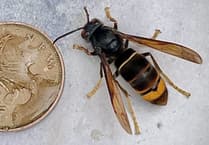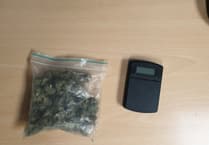THIS week’s picture features Courtenay Street in the late 1920s, or possibly the early 1930s, writes Steve Harris.
Several of the buildings will bring back memories to older Advertiser readers but it had me scratching my head for an explanation as to why there is a Lloyds Bank sign attached to the wall of the building on the left. As long as I have known the area, the site has always been occupied by Barclays.
Older pictures of the street from around 1906 show the bank as Newton Bank. This started me off digging unearthing a host of facts and stories previously unknown to me.
A check through an old directory dated 1876 gave the Newton Bank being run by Messrs Watts, Whidborne & Co and at that time operating in Highweek Street adjacent to Minerva House.
A newspaper account of the funeral of a Miss Baker in 1907 stated that her father, Nicholas, had originally founded the Newton Bank in 1817.
A bit more digging revealed that in 1891, following the death of John Whidborne, the bank was sold to the Capital and Counties Bank which, although it had headquarters in London, had started off as a regional bank based in Wiltshire in 1877.
In 1918 the Capital and Counties Bank was acquired by Lloyds Bank which already had a branch in the town at Drum Clock Corner. The merger of the banks was a long, drawn out affair. It was not until 1931 that the branch in Courtenay Street, formerly run by Capital and Counties, closed and the business was transferred to the main Lloyd’s branch further along the street at Drum Clock Corner.
READ THE FULL STORY IN FRIDAY’S MID-DEVON ADVERTISER.
ORDER YOUR DIGITAL EDITION http://edition.pagesuite-professional.co.uk/digitaleditions.aspx?tab=0&pid=1da842e3-0788-4c0d-a5c5-d64025fd8574 ">HERE





Comments
This article has no comments yet. Be the first to leave a comment.